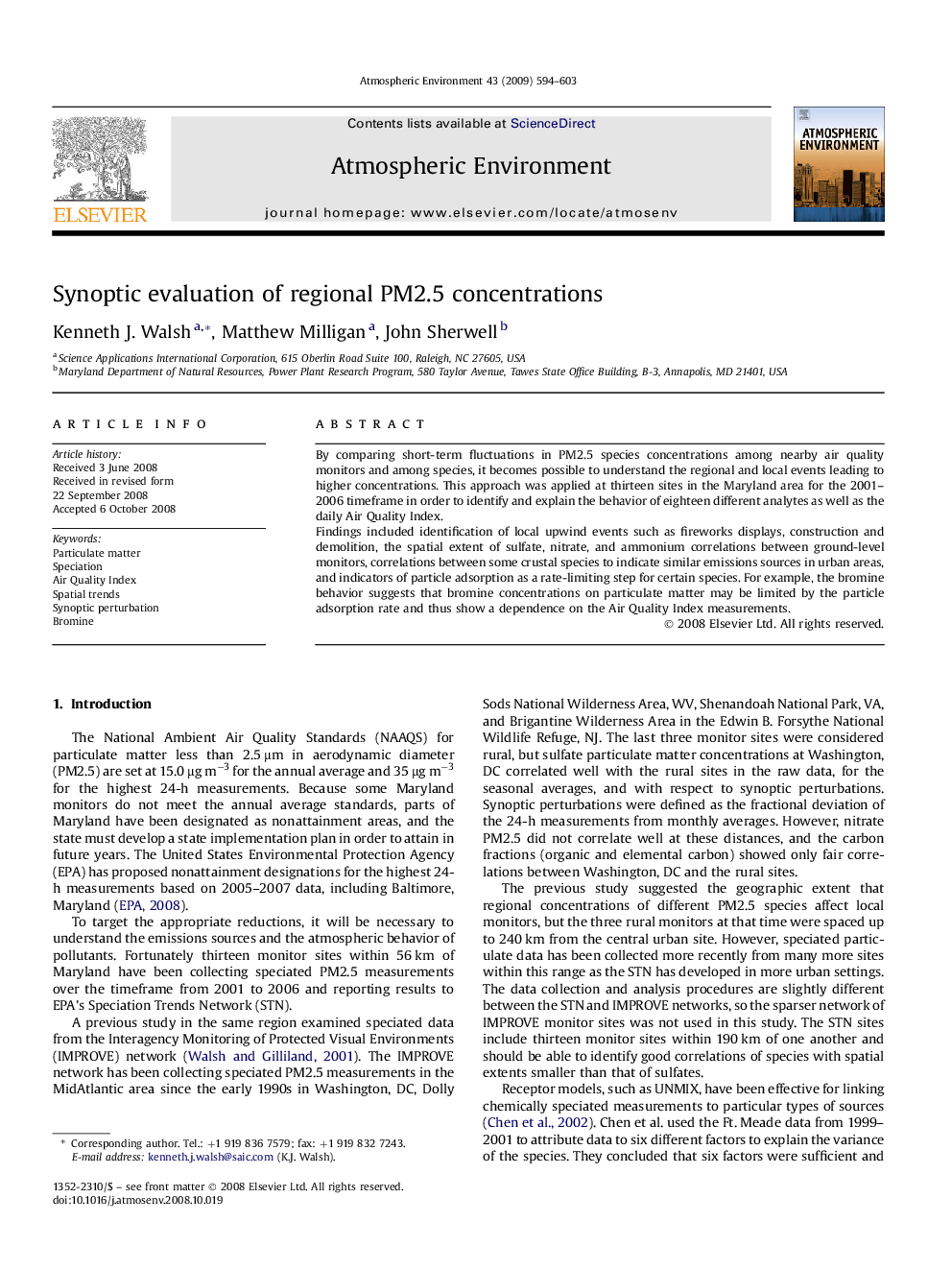| Article ID | Journal | Published Year | Pages | File Type |
|---|---|---|---|---|
| 4442289 | Atmospheric Environment | 2009 | 10 Pages |
By comparing short-term fluctuations in PM2.5 species concentrations among nearby air quality monitors and among species, it becomes possible to understand the regional and local events leading to higher concentrations. This approach was applied at thirteen sites in the Maryland area for the 2001–2006 timeframe in order to identify and explain the behavior of eighteen different analytes as well as the daily Air Quality Index.Findings included identification of local upwind events such as fireworks displays, construction and demolition, the spatial extent of sulfate, nitrate, and ammonium correlations between ground-level monitors, correlations between some crustal species to indicate similar emissions sources in urban areas, and indicators of particle adsorption as a rate-limiting step for certain species. For example, the bromine behavior suggests that bromine concentrations on particulate matter may be limited by the particle adsorption rate and thus show a dependence on the Air Quality Index measurements.
